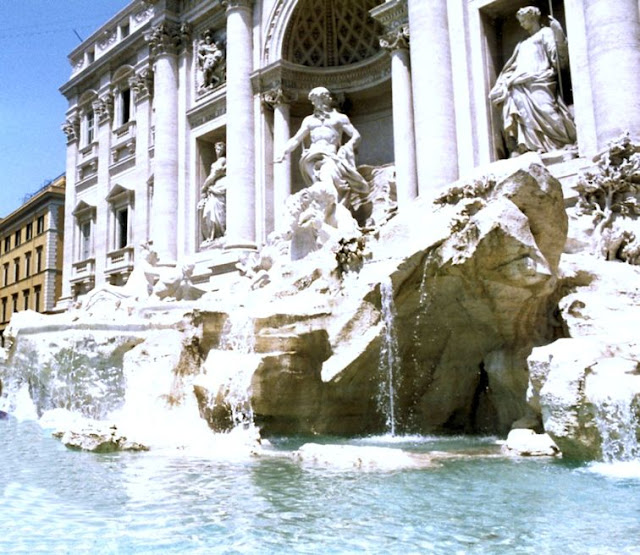Popes have been in the news lately with the death of Pope Francis and the election of Pope Leo XIV. The contributions of the popes to Rome’s art and architecture extend from the early Christian period to the Renaissance, Baroque, and even modern eras. As you walk through Rome now, you will encounter mostly Renaissance and Baroque examples, but beneath the new façades are frequently ancient beginnings.
Perhaps the oldest to be begun by a pope was Santa Maria in Trastevere. The first sanctuary was built in 221 and 227 on land donated by Pope Callixtus I.
 |
| Santa Maria in Trastevere |
The Renaissance popes, particularly from the late 15th to early 16th centuries, were instrumental in the revival of classical forms in art and architecture, marking a break from medieval styles.
Pope Nicholas V (1447-1455) is often considered the first of the "Renaissance" popes. He commissioned major rebuilding projects in Rome, including the restoration of the Roman aqueducts and the founding of the Vatican Library.
 |
| Capella Sistina |
 |
| Ponte Sisto |
In 1506 an ancient statue, the Laocoön, was discovered in a vineyard on the Oppio Hill in Rome. This, together with another ancient statue, the Belvedere Apollo, formed the basis of the Vatican collection begun by Pope Julius II (1503 -1513). Over the succeeding years hundreds of sculptures and paintings were added. Pope Julius II was one of the most significant patrons of art during the Renaissance. He commissioned Michelangelo to paint the Sistine Chapel ceiling (1508–1512), one of the most famous works in Western art, and oversaw the construction of the new St. Peter's Basilica, commissioning works from architects like Donato Bramante, Michelangelo, and Carlo Maderno. Also in the Vatican, he had Raffaello decorate the walls of his apartments with frescoes, now known as the Stanze di Raffaello. After Julius’ death, Pope Leo X (1513-1521) continued his support for Raffaello’s work.
 |
| Stanze di Raffaello |
Pope Urban VIII (1623-1644) is responsible for a significant quantity of Baroque art and architecture. He commissioned many works by Gian Lorenzo Bernini, such as the famous Baldacchino (canopy) above St. Peter's altar and the Piazza San Pietro (St. Peter's Square). Bernini also designed the dramatic Cathedra Petri (the Throne of St. Peter) in St. Peter's Basilica and the monumental tomb of Urban VIII , also inside St. Peter’s.
 |
| Bernini's colonnade at St. Peter's |
The Bernini’s iconic colonnade that embraces visitors in St, Peter’s square is one of the most emblematic features of Baroque architecture. And was realized during the reign of Pope Alexander VII (1655-1667).
Pope Innocent X (1644-1655) continued support for the arts, including Bernini’s Fountain of the four Rivers in Piazza Navona. He and other popes of that period were major patrons of the many Baroque church façades that define Rome’s skyline. These include Francesco Borromini’s work on Sant'Ivo alla Sapienza and San Carlo alle Quattro Fontane.
 |
| Interior of Borromini's San Carlo alle Quattro Fontane |
Patronage of Artists: Over the centuries, popes commissioned countless works of art, contributing to the creation of masterpieces in painting, sculpture, and architecture. Artists such as Michelangelo, Raphael, Bernini, and Caravaggio received papal commissions that shaped the trajectory of European art. Their support of artists, architects, and builders helped create some of the most iconic buildings and works of art in Western history, from the early Christian basilicas to Renaissance masterpieces and Baroque grandeur. Their influence not only shaped the city of Rome but also had a profound impact on the development of Western art and architecture as a whole.









